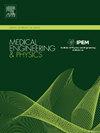Clinical usability and efficacy of a robotic bone fracture reduction system: A pilot animal study
IF 1.7
4区 医学
Q3 ENGINEERING, BIOMEDICAL
引用次数: 0
Abstract
Challenges in minimally invasive surgeries, such as intramedullary nailing for long bone fractures, include radiation overexposure for patients and surgeons, potential malreduction, and physical burden on surgeons in maintaining the reduction status. A robotic bone fracture reduction system was developed in this study to address these problems. The system consists of a hexapod with six degrees of freedom, with a fracture reduction device and a master device. This study aimed to evaluate the novel system in a preclinical setting. The length of the six axes in the system can be adjusted to precisely control the length, angle, and rotation so that no additional traction is required. Fluoroscopic images can be remotely examined to reduce the risk of radiation exposure for surgeons. In this study, alignment accuracy and radiation exposure were measured using 32 bovine bone fracture models, and these surgical outcomes were compared to those of conventional manual surgery to verify the clinical usability and effectiveness of the system. The alignment accuracy was assessed by analyzing length, angulation, and rotation. The four surgeons participating in this study were divided into two groups (expert and novice) according to their clinical experience. All parameters in robotic surgery significantly decreased by approximately 4 mm and 8° on average (p ≤ 0.05) compared to conventional surgery. The mean radiation exposure in robot-assisted surgery was 0.11 mSv, showing a significant decrease compared to conventional surgery (p < 0.05). Reduction accuracy was higher in robotic surgery performed by the novice group than in conventional surgery performed by the expert group; however, standard deviation values were inversed. In conclusion, the bone fracture reduction robot system increased the alignment accuracy through precise control while reducing radiation exposure in surgeons, as the surgery was performed remotely. The use of this system is predicted to improve the accuracy and reproducibility of the surgery and the safety of medical staff.1
机器人骨折复位系统的临床可用性和疗效:试验性动物研究
微创手术(如长骨骨折髓内钉)面临的挑战包括患者和外科医生过度暴露于辐射、潜在的骨折复位不良以及外科医生维持复位状态的体力负担。为解决这些问题,本研究开发了一种机器人骨折复位系统。该系统由一个具有六个自由度的六足机器人、一个骨折复位装置和一个主装置组成。本研究旨在对这一新型系统进行临床前评估。系统中六个轴的长度可以调整,以精确控制长度、角度和旋转,因此无需额外的牵引。透视图像可进行远程检查,以降低外科医生受到辐射的风险。在这项研究中,使用 32 个牛骨骨折模型测量了对位精确度和辐射暴露,并将这些手术结果与传统的人工手术结果进行了比较,以验证该系统的临床可用性和有效性。对位准确性是通过分析长度、角度和旋转来评估的。参与研究的四名外科医生根据其临床经验分为两组(专家组和新手组)。与传统手术相比,机器人手术的所有参数都明显降低,平均降低约4毫米和8°(P≤0.05)。机器人辅助手术的平均辐射量为 0.11 mSv,与传统手术相比明显降低(p ≤ 0.05)。新手组进行的机器人手术比专家组进行的传统手术的骨折复位准确率更高,但标准偏差值出现倒置。总之,骨折复位机器人系统通过精确控制提高了对位的准确性,同时减少了外科医生的辐射暴露,因为手术是远程进行的。预计该系统的使用将提高手术的准确性和可重复性,并提高医务人员的安全性。
本文章由计算机程序翻译,如有差异,请以英文原文为准。
求助全文
约1分钟内获得全文
求助全文
来源期刊

Medical Engineering & Physics
工程技术-工程:生物医学
CiteScore
4.30
自引率
4.50%
发文量
172
审稿时长
3.0 months
期刊介绍:
Medical Engineering & Physics provides a forum for the publication of the latest developments in biomedical engineering, and reflects the essential multidisciplinary nature of the subject. The journal publishes in-depth critical reviews, scientific papers and technical notes. Our focus encompasses the application of the basic principles of physics and engineering to the development of medical devices and technology, with the ultimate aim of producing improvements in the quality of health care.Topics covered include biomechanics, biomaterials, mechanobiology, rehabilitation engineering, biomedical signal processing and medical device development. Medical Engineering & Physics aims to keep both engineers and clinicians abreast of the latest applications of technology to health care.
 求助内容:
求助内容: 应助结果提醒方式:
应助结果提醒方式:


